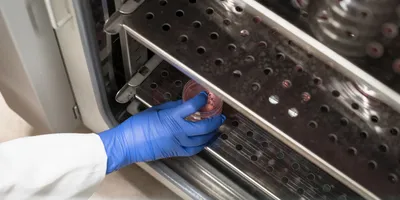Elemental analysis encompasses numerous techniques, both qualitative and quantitative. Among the most versatile is x-ray fluorescence (XRF), a method for both field and laboratory testing. XRF uses low-energy x-rays to excite electrons into more energetic orbits. The excited electrons release light as they return to their ground state—a fluorescence signal that is characteristic for each element.
Compact handheld energy dispersive x-ray fluorescence (EDXRF) is the XRF method of choice for dedicated applications and in the field. Handheld XRF devices use EDXRF whereas the much more accurate and sensitive wavelength-dispersive x-ray fluorescence (WDXRF) is more appropriate for benchtops. According to Michael Sparagna, a Bruker manufacturer’s rep and principal at MANIFEST Technical, LLC (Hermitage, PA), the choice between EDXRF and WDXRF depends on desired levels of precision and mobility. “EDXRF scans quickly for all elements simultaneously, while WDXRF analyzes each element individually. WDXRF takes more time, the instrumentation is more complex, but the answers are more precise.” EDXRF may therefore be thought of as a screening method, to which analysts might follow up with WDXRF. “Handheld XRF reaches tens of parts per million as the lower detection limit. Benchtop instruments get down to parts per billion levels,” Sparagna adds.
Getting samples right
Handheld XRF can be as accurate as WDXRF, but that requires controlling all variables; for example, distance between sample and probe and exposure time, which is difficult to achieve with a handheld device. There is also a concern regarding possible operator exposure to incident or reflected x-rays from portable EDXRF, which is minimized or eliminated with benchtop designs. On the other hand, field instruments are easier to use, less expensive, and faster, while their larger siblings demand greater care in return for more trustworthy results.
Sample preparation involves adding pure sample to a die and applying high pressure until it forms a solid, homogeneous disc or pellet. “Many samples form pellets quite easily. They bind to themselves and don’t require any type of additive or binder,” says Todd Baker, national sales manager at Specac, a spectroscopy accessories company.
Since the range of sample types amenable to XRF analysis is virtually endless, Specac also provides a useful checklist covering all aspects of XRF pelleting. Some highlights:
- When milling sample to a powder, make sure particles are as fine as possible and consistently-sized
- For samples that press nicely but require help to stay in place, analysts can use a crushable aluminum support cup, or metal rings as sample supports
- Don’t even consider a die made of anything but stainless steel, with sample contact surfaces polished to a mirror finish. Exception: For samples containing iron, use tungsten carbide die pellets
- Use die pressures appropriate for your sample
- Decide early on whether to use an automated or manual press. Hint: Building up 25 tons of pressure is tough, especially with multiple samples
XRF in action
Handheld XRF for elemental analysis provides portability, real-time results, and measures most elements. “Laboratory methods require sample preparation to homogenize the sample and remove interferences, but in-field XRF does not benefit from the homogeneity achieved with grinding, sieving, or digestion,” says Ted Shields, portable products manager at Olympus Scientific Solutions (Waltham, MA).
“Handheld XRF is vital when turnaround time is limited, particularly when remediation equipment is on site, and operators cannot wait for sample transportation and lab analysis,” Shields notes. When used in the field to assess environmental projects aimed at eventual site remediation, portable XRF instrumentation generates maps of contaminated areas, at acceptable detail, for subsequent follow-up testing in the lab. “Real-time portable XRF results provide sufficiently quantitative results for decision-making.”
Whether used in the field or in labs, handheld XRF is complementary to, not a replacement for, laboratory techniques. “Almost every lab manager I have talked to has more samples to test than they have time to analyze,” Shields adds. “The pressure to increase throughput is a constant challenge.”
For example, in cement manufacturing, testing laboratories are often so busy running final quality control on product, they lack the time and protocols to measure feedstocks, even though variability in feedstock quality (e.g. limestone, fly ash, bottom ash, and coal) can lead to expensive process upsets.
“Rather than using the ‘load the kiln and pray’ approach, portable XRF gives the operating technician the information they need to keep the feedstock process running smoothly without adding extra burden on the lab,” Shields says.










